Mark Berger: The King And I—Classic Tunes Revisited

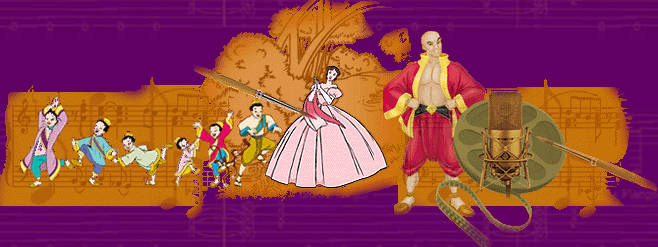
With Disney still holding back literally all of its classic movies on DVD, sightings of animated feature films are always bright spots in the sea of DVD releases. After having released “The Quest For Camelot” some time ago, Warner Home Video is now preparing to release their latest animated feature “The King And I” on DVD. This gave us the chance to catch up with the movie’s Executive Music Producer Mark Berger. As it turns out, Berger has a love for DVD and was closely involved in the creation of the disc and its numerous supplements.
“The King And I” is the true story of Anna Leonowens’ experiences as the teacher of the royal family in the exotic splendor of mid-19th century Imperial Siam. It became the novel called “Anna And The King Of Siam” by Margaret Landon, and later served as the base for the Broadway musical masterpiece “The King And I” by Richard Rodgers and Oscar Hammerstein. Now, Morgan Creek Productions and Warner Brothers present this story in an animated feature film that was directly adapted from the popular music.
“The DLT is going out the door, just as we speak,” Berger begins our conversation enthusiastically. The DLT (Digital Linear Tape) is used to send a premastered DVD to a replication service, and it means the release is well under way, giving him some time to breathe.
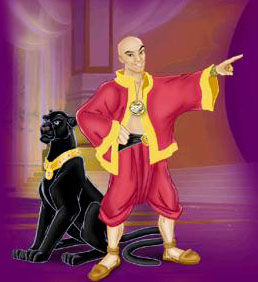 Mark Berger was running Morgan Creek’s music department and was brought on to oversee The King And I in its early design stages. “My job as the project’s Executive Music Producer was to find the musical director. When I got attached to the movie we had nothing but a script. So, reading the script it was up to me to try and find a composer, a director, arranger – however you want to call it – to rework the original music for The King and I.” This, of course, is not an easy task, as you need someone who can stay faithful to the original material, yet give it a new spark that appeals to today’s audiences. “I interviewed lots of composers for this production” Berger continues. “I went to New York to interview a number of composers from Broadway, which was wonderful. They’re all so talented it’s incredible. We knew we had some awesome responsibility to the Rodgers and Hammerstein songs. We knew we really had to do justice to what we had inherited.” Someone with diversity was needed, someone with experience in motion pictures, and someone who could catch the magic of animated movies. “We already had the Rodgers and Hammerstein material, so we needed to find someone to interpret their music in a way that would retain the integrity of the classic score and also reflects the spark of the animation. Especially in the suspense moments we wanted the feel of a live action film, so it was a matter of coming up with someone who could handle these duties just as well. Eventually I picked William Kidd for the project, the most talented and inspired musical director I could find.” William Kidd is a musical arranger with a distinguished background in Hollywood motion pictures, opera and musical theater – all the aspects that were important for this particular project.
Mark Berger was running Morgan Creek’s music department and was brought on to oversee The King And I in its early design stages. “My job as the project’s Executive Music Producer was to find the musical director. When I got attached to the movie we had nothing but a script. So, reading the script it was up to me to try and find a composer, a director, arranger – however you want to call it – to rework the original music for The King and I.” This, of course, is not an easy task, as you need someone who can stay faithful to the original material, yet give it a new spark that appeals to today’s audiences. “I interviewed lots of composers for this production” Berger continues. “I went to New York to interview a number of composers from Broadway, which was wonderful. They’re all so talented it’s incredible. We knew we had some awesome responsibility to the Rodgers and Hammerstein songs. We knew we really had to do justice to what we had inherited.” Someone with diversity was needed, someone with experience in motion pictures, and someone who could catch the magic of animated movies. “We already had the Rodgers and Hammerstein material, so we needed to find someone to interpret their music in a way that would retain the integrity of the classic score and also reflects the spark of the animation. Especially in the suspense moments we wanted the feel of a live action film, so it was a matter of coming up with someone who could handle these duties just as well. Eventually I picked William Kidd for the project, the most talented and inspired musical director I could find.” William Kidd is a musical arranger with a distinguished background in Hollywood motion pictures, opera and musical theater – all the aspects that were important for this particular project.
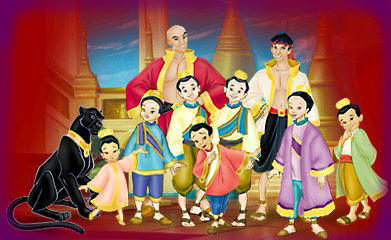 Converting classic material like the songs for “The King And I” to an animated feature film requires a lot of rework on that material. Berger and Kidd began collaborating on the musical score very early in the production schedule, trying to fathom out the artistic liberties they needed take to bring the songs to life in the film. “All the changes we made and all the liberties we took were done with the blessing of the Rodgers and Hammerstein Organization. They wanted – and we wanted – it to feel like the classic score.While the song melodies of the classic tunes are completely intact in the new animated feature, some of the verses were deleted and no new ones were added. “None of the lyrics were changed either” Berger points out. “You’re really getting the Rodgers and Hammerstein music. What William did was to take the songs and brilliantly adapt the melodies to form the underscore of the film.” All the characters in the film received distinctive character themes, all of which were taken from the classic material. “The theme of I Whistle A Happy Tune became the character theme for Master Little and for Kralahome we used Puzzlement.” Berger explains excitedly, full of praise for William Kidd. “That was the talents that he brought in, to adapt these scores and stay true to the originals.”
Converting classic material like the songs for “The King And I” to an animated feature film requires a lot of rework on that material. Berger and Kidd began collaborating on the musical score very early in the production schedule, trying to fathom out the artistic liberties they needed take to bring the songs to life in the film. “All the changes we made and all the liberties we took were done with the blessing of the Rodgers and Hammerstein Organization. They wanted – and we wanted – it to feel like the classic score.While the song melodies of the classic tunes are completely intact in the new animated feature, some of the verses were deleted and no new ones were added. “None of the lyrics were changed either” Berger points out. “You’re really getting the Rodgers and Hammerstein music. What William did was to take the songs and brilliantly adapt the melodies to form the underscore of the film.” All the characters in the film received distinctive character themes, all of which were taken from the classic material. “The theme of I Whistle A Happy Tune became the character theme for Master Little and for Kralahome we used Puzzlement.” Berger explains excitedly, full of praise for William Kidd. “That was the talents that he brought in, to adapt these scores and stay true to the originals.”
To bring the music to life in the film, Kidd went to London to conduct the Philharmonia Orchestra, and Berger explains. ‘Kidd is also a terrific conductor, which you’ll see on the documentary where he conducts the “Philharmonia Orchestra”. They are one of the world class orchestras from London and we felt that its connection to the story’s English roots was important. It’s a full 80-piece orchestra that plays together all the time. They are very experienced and were excited to do the film. They all knew the material from their childhood, and there was their opportunity to play the material.”
An avid lover of the DVD format, Berger also wanted to make sure that this excellence would be properly represented on the home video version of the film. “I love the DVD format” he tells me. “I think it is a fabulous format. As I mentioned before, I am running Morgan Creek’s music department, and I care a lot about the quality of the visual presentation and the audio. I think a number of DVDs that were put in the marketplace are very good, but on the other hand, a number of them didn’t realize the potential of the format. Caring about the quality, I felt the medium offered an opportunity to fully experience the film. So I went to James Robinson, the president of Morgan Creek and asked him if I could give it a go – and he gave me the go-ahead.”
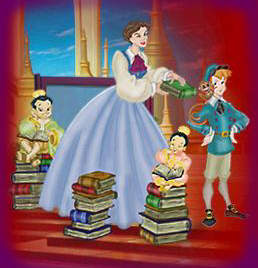 While to most people the visual presentation is the most striking aspect of a film, through his background, Berger feels equally strong about the quality of the audio. “For one, when I put audio an a DVD, I remaster it. The surround that is in theaters is not necessarily the best surround for a home environment. What we tried to do was to create the best home environment possible. We remastered the entire audio, using an FDS system from Quadtech. It just brings out the clarity in the music and vocals. You can hear the dialog and crescendos and de-crescendos without having to lower the volume on your TV set.” We all are certainly familiar with poor audio mixes where at one point the music is so loud that it forces you to turn down the volume, only to be followed by low level dialog becomes then incomprehensible, forcing you to turn the volume back up. A very disruptive process that can entirely break the suspense of disbelief, and a thorn in Berger’s side, who made sure this won’t happen in this release. ”You don’t have to adjust it all the time. We balanced it and when the music crescendos, it doesn’t get in the way with the dialogue.” However, the soundtrack has not been completely remixed, as you might expect. “It’s not a different mix. It is the same mix but there was a clarifying process that we went through. The huge room of a theater creates a certain surround experience. If you take the exact thing to a home theater, the result is completely different. We took the audio and made sure those speakers carried information with the intent of the moviemakers.”
While to most people the visual presentation is the most striking aspect of a film, through his background, Berger feels equally strong about the quality of the audio. “For one, when I put audio an a DVD, I remaster it. The surround that is in theaters is not necessarily the best surround for a home environment. What we tried to do was to create the best home environment possible. We remastered the entire audio, using an FDS system from Quadtech. It just brings out the clarity in the music and vocals. You can hear the dialog and crescendos and de-crescendos without having to lower the volume on your TV set.” We all are certainly familiar with poor audio mixes where at one point the music is so loud that it forces you to turn down the volume, only to be followed by low level dialog becomes then incomprehensible, forcing you to turn the volume back up. A very disruptive process that can entirely break the suspense of disbelief, and a thorn in Berger’s side, who made sure this won’t happen in this release. ”You don’t have to adjust it all the time. We balanced it and when the music crescendos, it doesn’t get in the way with the dialogue.” However, the soundtrack has not been completely remixed, as you might expect. “It’s not a different mix. It is the same mix but there was a clarifying process that we went through. The huge room of a theater creates a certain surround experience. If you take the exact thing to a home theater, the result is completely different. We took the audio and made sure those speakers carried information with the intent of the moviemakers.”
And then, of course, there are the special features, which can make DVD such an interactive experience. “On the special features side, I feel the DVD should give consumers more than VHS, and there’s something to tell about every movie!” Considering that every movie is a major undertaking, he is certainly right, and Berger feels that consumers really start looking for that. “They are thirsty for that kind of information. What does the director have to say about this, what happened there… I knew from the beginning that I wanted to put a lot of content on the DVD, which is why we went for a DVD-9 (Dual layer DVD).”
Although the film itself might have easily fit on a single layer, the dual layer was also chosen to allow increased quality of the feature film. “One could, as a strictly technical matter, cramp everything on one layer, but your bitrate goes so low for the movie that it’s not acceptable anymore.” Especially animated films can become a stress test for DVD’s MPEG-2 encoding. The high contrast, the sharp edges, and the solid color textures can create all kinds of digital artifacts if the compression is not done very carefully, and usually you are forced to use a higher bitrate than a comparable live action film would require. “We wanted the variable bitrate for the picture at the highest reasonable level and we ended up anywhere from 4.5 Mbps to 8.5 Mbps. It was important that we could allow ourselves the headroom to do that. We did want to have the special features in there and so the DVD-9 became the only way to go.”
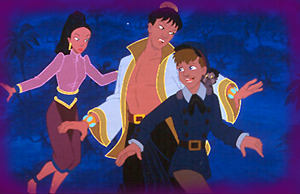 Of course, splitting the content on two sides would have been another option, but Berger doesn’t sympathize with double-sided discs very much. “To experience the movie and the features, you usually don’t want to get up and turn the disc over. You want to escape in that environment. There are circumstances where it is suitable, but for this one, to get the full experience it had to be the way we did it.”
Of course, splitting the content on two sides would have been another option, but Berger doesn’t sympathize with double-sided discs very much. “To experience the movie and the features, you usually don’t want to get up and turn the disc over. You want to escape in that environment. There are circumstances where it is suitable, but for this one, to get the full experience it had to be the way we did it.”
The DVD release for “The King And I” will contain some interesting features, that are directly targeted at families. Berger remembers “I wanted to have a Karaoke and a Sing-A-Long function on the disc. I came up with the general idea what should go on and then worked with AIX, our authoring facility who took my ideas and brought them fruition. They created the graphics and all that.”
The Sing-A-Long feature on the disc allows viewers to sing to the tunes during the course of the movie. The lyrics will appear on the screen when you get to a track and you can start to sing. “It’s almost this follow-the-bouncing-ball kind of thing” Berger explains. “You sing along as it is highlighted.”
The Karaoke feature on the other hand is isolated from the actual movie. “The Karaoke is in the special features section and we used two songs from the movie Berger describes. “We put in the backing tracks for these songs without vocals. Although, if you don’t know the lyrics, you can always play it with the King singing with you until you know the words. Then you turn him off and you’ll have yourself backed by the London Philharmonia Orchestra”, he smiles.
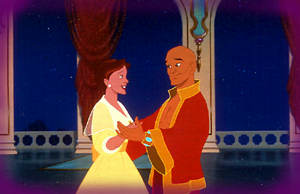 The disc also contains a supplement called “The Animation Evolution”. It is a behind-the-scenes feature of a slightly different kind. “The Animation Evolution is something I am very happy with. It gives the viewer the opportunity to get a sense of how animation comes about” Berger explains enthusiastically. The feature contains various scenes from the movie in 4 different variations, allowing the viewer to watch the progress from the early beginnings of the project all the way to the final product.
The disc also contains a supplement called “The Animation Evolution”. It is a behind-the-scenes feature of a slightly different kind. “The Animation Evolution is something I am very happy with. It gives the viewer the opportunity to get a sense of how animation comes about” Berger explains enthusiastically. The feature contains various scenes from the movie in 4 different variations, allowing the viewer to watch the progress from the early beginnings of the project all the way to the final product.
“You have 4 possibilities to chose from” Berger continues. “You have the studio view so you see the voice talent in the studio doing the voice recording. Then you can go to the rough animation for that same scene, or to the clean-up animation or the final animation of exactly that same scene.
The nice thing is, it’s not happening in a linear way. We decided to use the angle switch to move from one to the next, to the next, to the next. And each one you just want to see all way to the end…” he laughs.
“We also incorporated the early piano and synthesizer audio tracks in there, and also the final orchestral track with the Philharmonia Orchestra. Now you can watch Christiane Noll in the studio singing “Getting To Know You” to a piano track or switch to the full orchestral soundtrack. We have complete interactivity between those elements. It’s really exciting to see what you have to go through until it’s all finished.” Berger muses.
Then of course, the disc contains an almost obligatory documentary called the “Sizzle Reel”. “Sizzle Reel is a documentary we did before the movie was complete” Berger remembers. “We put rough footage in there, because it was originally a marketing tool earlier on, with some interviews, history of the making of the movie and all that. Subsequently we did a full-on featurette that shows more of the making of the animation, one that has more in-depth interviews with the voice talents in the movie. “
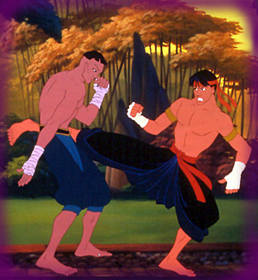 To round the disc up, it also contains the “Creative Room”, a featurette focussed solely on the making of the music, which talks about the process of finalizing the score. “There is 2 years of musical activities in a film like The King And I, starting with the voices. Voices are always the first thing you do in an animated movie. So, we created a simple piano track. Then the actors sang their parts to that. After that all the different animation stages – roughs, clean-up and final animation – were completed. Fast forward 2 years… everything is final now, but there’s still the piano track. The next thing we do is the final score to replace the piano tracks, keeping the same click track so it syncs up with the animation.”
To round the disc up, it also contains the “Creative Room”, a featurette focussed solely on the making of the music, which talks about the process of finalizing the score. “There is 2 years of musical activities in a film like The King And I, starting with the voices. Voices are always the first thing you do in an animated movie. So, we created a simple piano track. Then the actors sang their parts to that. After that all the different animation stages – roughs, clean-up and final animation – were completed. Fast forward 2 years… everything is final now, but there’s still the piano track. The next thing we do is the final score to replace the piano tracks, keeping the same click track so it syncs up with the animation.”
Although the thought of a full orchestra playing to a click-track to keep their tempo is a little bewildering at first, of course it makes perfect sense. It doesn’t sound like an easy undertaking however. Berger remembers “The orchestra was perfectly fine playing to a click. They’re professional recording musicians, used to studio work. They do a lot of movies and TV work, so it wasn’t a problem for them at all. It does take a special talent, though. Some people are great musicians, but not recording artists, so they don’t have the experience to play to a click and it throws them off completely.”
For the most part, it is the conductor however who has the click and can then adjust his conducting to the flow of the music. “A wonderful conductor, like the one we had in Kidd, can get the orchestra to nail it where he needs the hit etc. Where he needs more of a free flow and he just does it, despite the click.” Still, that is a major undertaking, especially because deviating from an existing click, and then synching back up with it is nothing you do single-handedly.
“When you watch the behind the music documentary and watch how he conducts, you will see that everyone could follow him” Berger laughs. “He is great and so is the Philharmonia. Because they’re an orchestra that works together all the time it made it much easier.”
Dolby Digital is well on its way to become the de-facto standard for home video, and its multi-channel capabilities offer a more immersive sonic experience than traditional stereo or Dolby Surround soundtracks. Still, continuous discussions always ignite the question, which sound format is the best-suited one. “I’m happy when any excellent standard is used for audio” Berger answers after some deliberation. “Whether it’s one system or another, I think the Dolby Digital format is a wonderful system, so I am very happy that you can finally experience audio at home the way it was supposed to be heard.”
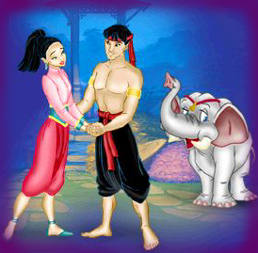 “The King And I” was theatrically released in 4 different sound formats, including Dolby Digital, SDDS and DTS, and according to Berger they all sounded wonderful.” Some systems have their benefits versus their deficicts. They don’t sound all the same but the difference is ultimately, do I want to drive a Lincoln or a Cadillac.”
“The King And I” was theatrically released in 4 different sound formats, including Dolby Digital, SDDS and DTS, and according to Berger they all sounded wonderful.” Some systems have their benefits versus their deficicts. They don’t sound all the same but the difference is ultimately, do I want to drive a Lincoln or a Cadillac.”
With arguments still flaring up all over the place, the question clearly becomes, why does an audiophile like Berger go for a Dolby Digital track in this release instead of a DTS track that might be able to reproduce the music even better. “I have heard DTS puts out wonderful [home entertainment] product, but it also uses more bits. For me Dolby Digital is excellent. In a case where I try to devote those bits to the movie and the special features, and hope to fit it all on a single DVD-9 that definitely becomes a determination and a delimiting factor. Dolby Digital is an excellent format, so that’s what we used for that particular movie. We chose to go with a 448 kbps data rate for the audio instead of the standard 384 kbps. That way the audio stream is less compressed which in turn gives us more dynamic.”
For a movie that is drawing much of its appeal from the music, it is hardly surprising that Berger and Warner Home Video decided to create a DVD release that is focussing on the many aural aspects of the film. It is a refreshing approach that makes this title all the more interesting. It will refresh our memories with classic songs like “Getting To Know You” or “Shall We Dance?” and introduce completely new generations of movie watchers to the memorable work of Rodgers and Hammerstein.
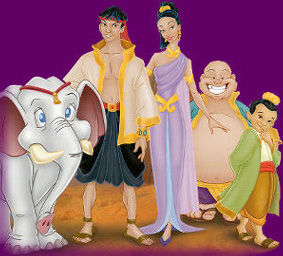
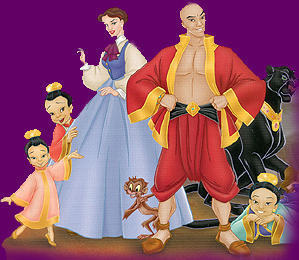
To make the wait until the release of “The King And I” a little more tolerable for you, here we have a few of the disc’s menu screens for you. Please click on the thumbnails for an enlarged version.

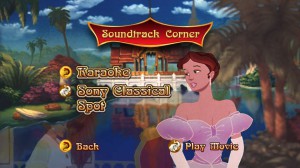
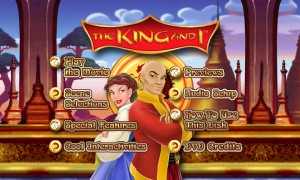
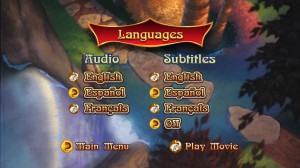
Leave a comment
You must be logged in to post a comment.